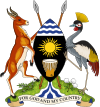
Sudan, officially the Republic of the Sudan, is a country in Northeast Africa. It borders the Central African Republic to the southwest, Chad to the west, Egypt to the north, Eritrea to the northeast, Ethiopia to the southeast, Libya to the northwest, South Sudan to the south, and the Red Sea. It has a population of 45.7 million people as of 2022 and occupies 1,886,068 square kilometres, making it Africa's third-largest country by area and the third-largest by area in the Arab League. It was the largest country by area in Africa and the Arab League until the secession of South Sudan in 2011; since then both titles have been held by Algeria. Its capital city is Khartoum, and its most populous city is Omdurman.

The Kakwa people are a Nilotic ethnic group and part of the Karo people found in north-western Uganda, south-western South Sudan, and north-eastern Democratic Republic of the Congo, particularly to the west of the White Nile river.

Isma'il Pasha, also known as 'Ismail the Magnificent, was the Khedive of Egypt and ruler of Sudan from 1863 to 1879, when he was removed at the behest of Great Britain and France. Sharing the ambitious outlook of his grandfather, Muhammad Ali Pasha, he greatly modernized Egypt and Sudan during his reign, investing heavily in industrial and economic development, urbanization, and the expansion of the country's boundaries in Africa.

Anglo-Egyptian Sudan was a condominium of the United Kingdom and Egypt between 1899 and 1956, corresponding mostly to the territory of present-day South Sudan and Sudan. Legally, sovereignty and administration were shared between both Egypt and the United Kingdom, but in practice the structure of the condominium ensured effective British control over Sudan, with Egypt having limited local power and influence. In the meantime, Egypt itself fell under increasing British influence. Following the Egyptian Revolution of 1952, Egypt pushed for an end to the condominium, and the independence of Sudan. By agreement between Egypt and the United Kingdom in 1953, Sudan was granted independence as the Republic of the Sudan on 1 January 1956. In 2011, the south of Sudan itself became independent as the Republic of South Sudan.

Al-Zubayr Rahma Mansur Pasha, also known as Sebehr Rahma or Rahama Zobeir, was a slave trader in the late 19th century. He later became a pasha and governor in Sudan.

Ottoman Egypt was an administrative division of the Ottoman Empire after the conquest of Mamluk Egypt by the Ottomans in 1517. The Ottomans administered Egypt as a province (eyalet) of their empire. It remained formally an Ottoman province until 1914, though in practice it became increasingly autonomous during the 19th century and was under de facto British control from 1882.

Shendi or Shandi is a small city in northern Sudan, situated on the southeastern bank of the Nile River 150 km northeast of Khartoum. Shandi is also about 45 km southwest of the ancient city of Meroë. Located in the River Nile state, Shandi is the center of the Ja'alin tribe and an important historic trading center. Its principal suburb on the west bank is Matamma. A major traditional trade route across the Bayuda Desert connects Matamma to Merowe and Napata, 250 km to the northwest. The city is the historical capital of the powerful Arabised Nubian Ja'alin tribe whom most of its denizens belong to. The village of Hosh Bannaga, hometown of former President Omar al-Bashir, is located on the outskirts of the city.

Turco-Egyptian Sudan, also known as Turkiyya or Turkish Sudan, describes the rule of the Eyalet and later Khedivate of Egypt over what is now Sudan and South Sudan. It lasted from 1820, when Muhammad Ali Pasha started his conquest of Sudan, to the fall of Khartoum in 1885 to Muhammad Ahmad, the self-proclaimed Mahdi.
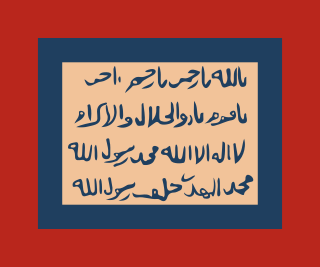
The Mahdist State, also known as Mahdist Sudan or the Sudanese Mahdiyya, was a state based on a religious and political movement launched in 1881 by Muhammad Ahmad bin Abdullah against the Khedivate of Egypt, which had ruled the Sudan since 1821. After four years of struggle, the Mahdist rebels overthrew the Ottoman-Egyptian administration and established their own "Islamic and national" government with its capital in Omdurman. Thus, from 1885 the Mahdist government maintained sovereignty and control over the Sudanese territories until its existence was terminated by the Anglo-Egyptian forces in 1898.

Al-Waqa'i' al-Misriyya was an Egyptian newspaper established in 1828 on the order of Muhammad Ali, originally called "Vekayi-i Misriye" and written in Ottoman Turkish in one column with an Arabic translation in a second column, and later in Arabic only under the Arabic title.
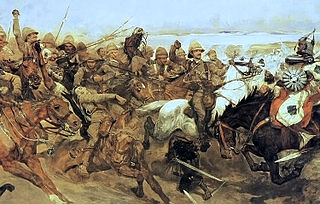
The Mahdist War was a war between the Mahdist Sudanese, led by Muhammad Ahmad bin Abdullah, who had proclaimed himself the "Mahdi" of Islam, and the forces of the Khedivate of Egypt, initially, and later the forces of Britain. Eighteen years of war resulted in the creation of Anglo-Egyptian Sudan (1899–1956), a de jure condominium of the British Empire and the Kingdom of Egypt in which Britain had de facto control over Sudan. The Sudanese launched several unsuccessful invasions of their neighbours, expanding the scale of the conflict to include not only Britain and Egypt but also the Italian Empire, the Congo Free State and the Ethiopian Empire.

The Khedivate of Egypt was an autonomous tributary state of the Ottoman Empire, established and ruled by the Muhammad Ali Dynasty following the defeat and expulsion of Napoleon Bonaparte's forces which brought an end to the short-lived French occupation of Lower Egypt. The Khedivate of Egypt had also expanded to control present-day Sudan, South Sudan, Eritrea, Djibouti, northwestern Somalia, northeastern Ethiopia, Lebanon, Jordan, Syria, Greece, Cyprus, southern and central Turkey, in addition to parts from Libya, Chad, Central African Republic, and Democratic Republic of Congo, as well as northwestern Saudi Arabia, parts of Yemen and the Kingdom of Hejaz.

The Egyptian–Ethiopian War was a war between the Ethiopian Empire and the Khedivate of Egypt, a autonomous tributary state of the Ottoman Empire, from 1874 to 1876. The conflict resulted in an unequivocal Ethiopian victory that guaranteed continued independence of Ethiopia in the years immediately preceding the Scramble for Africa. Conversely, for Egypt the war was a costly failure, severely blunting the regional aspirations of Egypt as an African empire, and laying the foundations for the beginning of the British Empire's 'veiled protectorate' over Egypt less than a decade later.
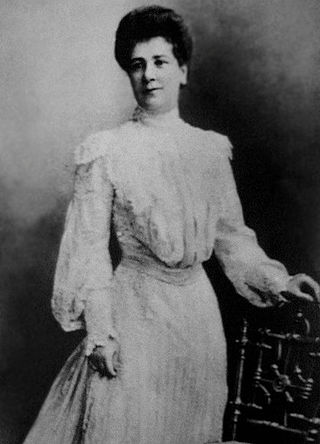
Neshedil Qadin was a consort to Khedive Isma'il Pasha of Egypt.
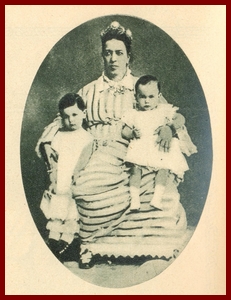
Shafaq Nur Hanim was the fourth wife of Khedive Isma'il Pasha and was Walida Pasha to their son Tewfik Pasha, the next Khedive of Egypt and Sudan.

The Circassians in Egypt are people of Egypt with Circassian origin. For centuries, Circassians have been part of the ruling elite in Egypt, having served in high military, political and social positions. The Circassian presence in Egypt traces back to 1297 when Lajin became Sultan of Mamluk Sultanate of Egypt. Under the Burji dynasty, Egypt was ruled by twenty one Circassian sultans from 1382 to 1517. Even after the abolishment of the Mamluk Sultanate, Circassians continued to form much of the administrative class in Egypt Eyalet of Ottoman Empire, Khedivate of Egypt, Sultanate of Egypt and Kingdom of Egypt. Following the Revolution of 1952, their political impact has been relatively decreased.

The Egyptian conquest of Sudan was a major military and technical feat. Fewer than 10,000 men set off from Egypt, but, with some local assistance, they were able to penetrate 1,500 km up the Nile River to the frontiers of Ethiopia, giving Egypt an empire as large as Western Europe.
Ismail Siddiq, also known as Ismail Siddiq Pasha and Ismail Al Mufash, (1830–1876) was an Egyptian statesman who served as the finance minister from 1868 to 1876. He was one of the prominent members of the dhawāt which refers to noble individuals occupying major offices in Egypt at that period.

Slavery in Egypt existed up until the early 20th century. It differed from the previous slavery in ancient Egypt, being managed in accordance with Islamic law from the conquest of the Caliphate in the 7th century until the practice stopped in the early 20th-century, having been gradually abolished in the late 19th century. Slave trade was abolished successively between 1877 and 1884. Slavery itself was not abolished, but it gradually died out after the abolition of the slave trade, since no new slaves could be legally acquired. Existing slaves were noted as late as the 1930s.
The Suares family was a Sephardic Jewish family who settled in Egypt. The family's three brothers, Raphael, Youssef, and Felix, became prominent in political and economic activity in Egypt and founded the Suares Foundation in 1857. They were credited with establishing many banks, in addition to participating with other Jewish families in Egypt's economy, including the Qatawi family and the Rollo family.



















